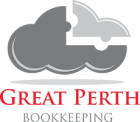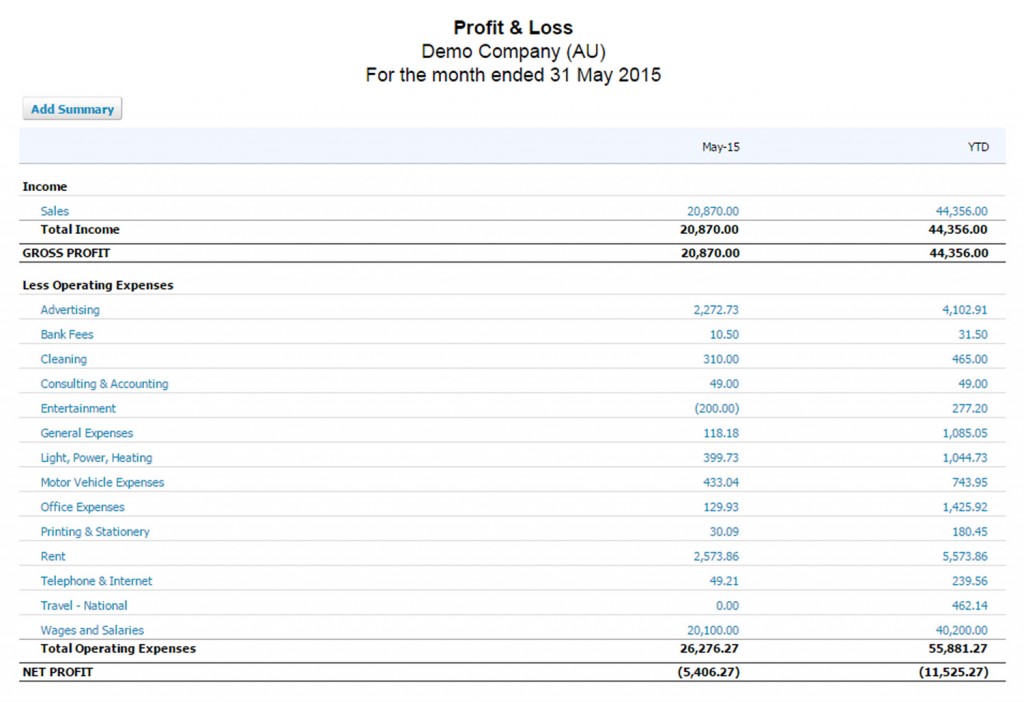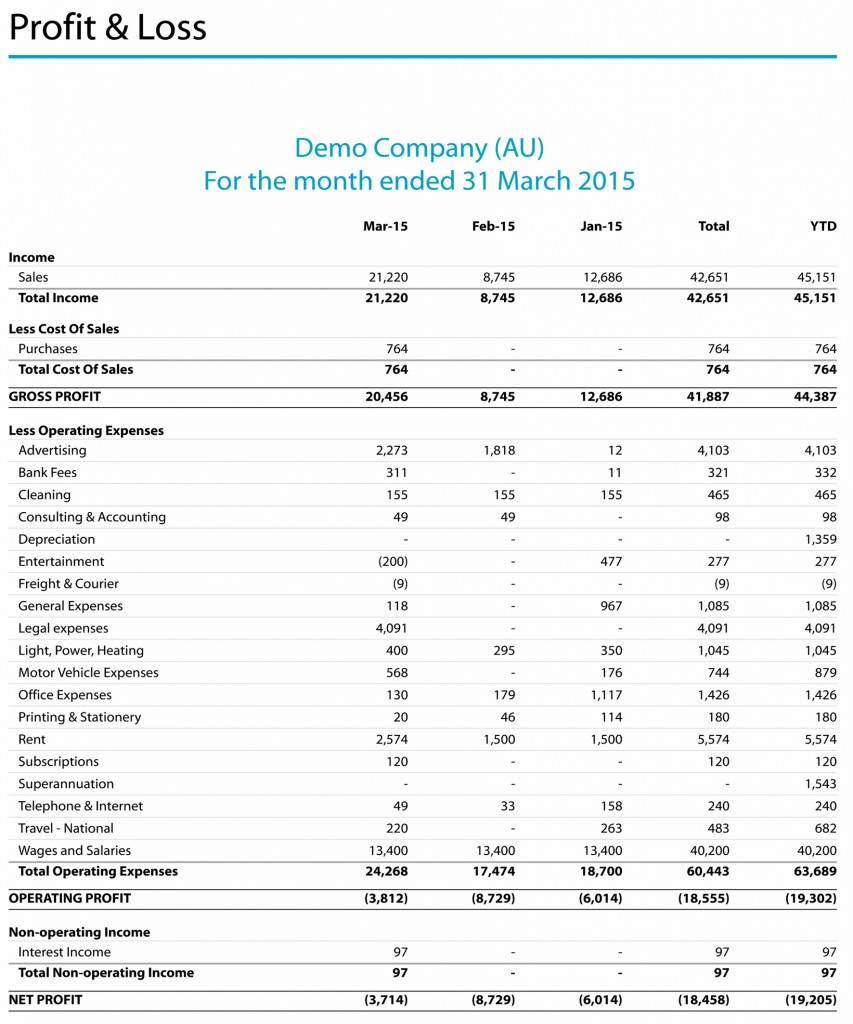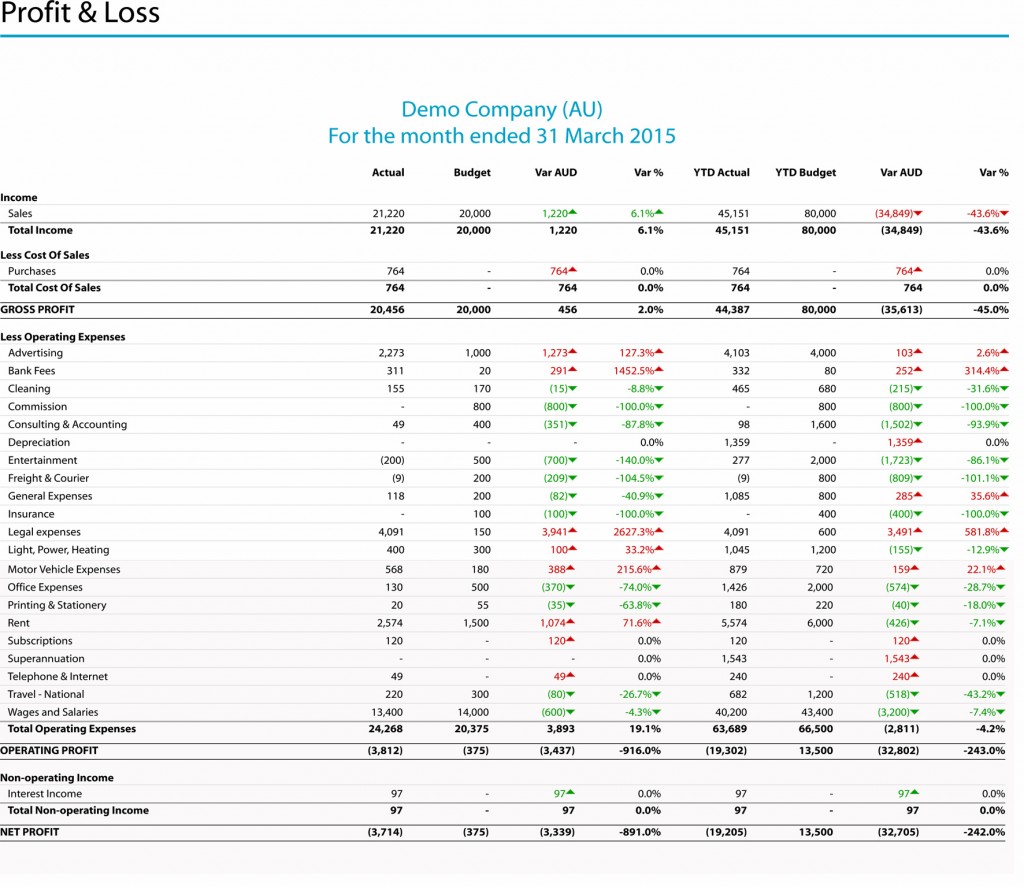The Profit and Loss Report shows the performance of a business over a given period of time. By itself this has limited value so it would be much more useful for the given period (say a month) to be compared with previous months, the same month in previous years or against goals as expressed in budgets. Here is a brief overview of common reporting formats and the benefits or otherwise of each.
Profit and Loss Year to Date for Month
A Profit and Loss Report in this simple form will show you how much revenue you have made for the month less what your expenses have been. You could add a column showing Year to Date to provide an indication of how the business performed for that month in relation to the year so far and to obtain an indication of how your annual profit is tracking.
Example:
This format suits businesses where month to month performance is relatively consistent but it would not be particularly useful for businesses subject to seasonal variations.
Profit and Loss Multi Period Spreadsheet
A more useful form of the Profit and Loss Report is to show month by month comparisons. This format is useful because you can see how the business has performed month by month over a selectable period and includes a total for the period (and optionally, the year). It is also handy for spotting things that might have been missed or duplicated like a rent payment for example. Significant variations between each month that can’t be quickly explained probably call for further investigation.
Profit and Loss (Compare with Budget)
A budget is an important tool for projecting what your business will be doing in the future and for keeping you on track with your business plan. A budget is a summary of expected income and expenses for the period. Regular reviews of your budget against actual results will reveal whether your business is on track to achieve the goals you have set.
For business owners who are keen to develop their businesses, a Profit and Loss Report Compared with Budget will be particularly valuable. This report compares monthly performance against budget and shows at a glance where the business went well or where some review may be required.
Important
The July to March reporting period is particularly important because after nine months of trading, it is possible to forecast the trend for the rest of the year. There is still time enough to put in place measures to enhance your tax or other business objectives. Therefore after this BAS period has been completed we recommend that you visit your accountant for a review and tax planning meeting.
For more information download our awkwardly titled FREE eBook Why Relying on Your Profit & Loss Report Can Send You Broke plus Ten (or 11) Tips on How to Improve Your Cash Flow plus Is Your Bookkeeper Really looking After You plus Much Much More!
Contact Great Perth Bookkeeping if you need any help in understanding budgets or your Profit & Loss Report.



